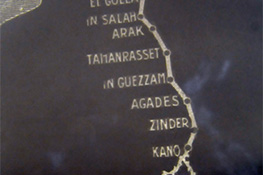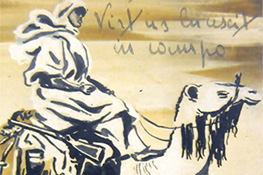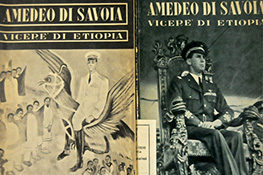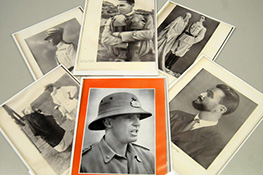Versione italiana English version Version française Versión en español
In 2003 the historical library "Giuseppe Grosso" acquired the library "Campini", coming from the library of the Duchess Elena d'Orléans, and so named by Otto Campini, second marriage husband of Duchess Elena whose first husband was Emanuele Filiberto second Duke of Aosta, son of Princess Maria Vittoria Dal Pozzo della Cisterna.
The Fund consists of about 3,500 works, published from the sixteenth century, with a section of volumes autographed by the same Elena d'Orléans. Its core consists of extensive documentation on the geographical, ethnographic and anthropological aspects of central and northern Africa. In this context of particular value are the unpublished diaries, typed and accompanied by numerous original photographs of the time, historical evidence of the travels of the Duchess Elena in Africa began in 1907 and continued in the twenties and thirties of the last century. Also noteworthy are some works published by the Duchess, such as Voyages en Afrique (Milan, 1913), Vers le soleil qui se lève (Ivrea, 1918), Attraverso il Sahara. Travel journal, January-March 1933 (Rome, excerpt from the "New Anthology", 1935).
In the collection are widely documented the interests in the same field of his son, Amedeo, third Duke of Aosta, born at Palazzo Cisterna on 21st October 1898, who, inherited from his mother the passion for Africa, just eighteen went to Somalia with his uncle Luigi Amedeo, the Duke of the Abruzzi. Together they explored the river Uebi Scebeli and built a railway and a village called Villaggio Duca degli Abruzzi. Amedeo, appointed in 1937 governor general of Italian East Africa and viceroy of Ethiopia, participated in the 1941 Battle of Amba Alagi. Made a prisoner of war by the British, he died in Nairobi on 3rd March 1942.
We point out the two most interesting and complete works due to his pen, "Notes and impressions on the Belgian Congo" (Rome, 1925) and "African Studies" (Bologna, 1942) which collects, in addition to studies on the Congo, scrupulous documentation on the legal relations between the States and the indigenous peoples of the colonies, in particular in the geographical area of the Altppiano del Fezzan, the oasis of Cufra and the interior of Libya. The collection also includes a rare sixteenth century, Report of the kingdom of the Congo and the surrounding districts of Bartolomeo Grassi (Rome, 1591), equipped with nine original plates.




